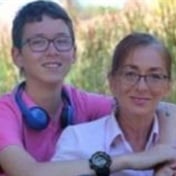A 36-year-old husband and father of two children with an inoperable tumour in his trachea (windpipe) has received the world's first artificial trachea made with stem cells.
A report published online Nov. 23 in The Lancet described the transplant surgery, which was performed in June at the Karolinska University Hospital in Stockholm, Sweden.
Without the transplant, the authors of the report explained, the man from Reykjavik, Iceland would have died. A golf ball-sized tumour on his trachea had begun to restrict his breathing. In a 12-hour procedure, doctors completely removed the affected area of his trachea and replaced it with an artificial one.
The artificial trachea was custom-made using three-dimensional imaging. First, a glass model was built to help shape an artificial scaffold. Stem cells were then inserted into the scaffold to create a functioning airway, the authors explained in a journal news release.
Rejection risk low
The scientists said their technique is an improvement over other methods because they used the patient's own cells to create the airway so there is no risk of rejection and the patient does not have to take immunosuppressive drugs.
In addition, they noted, because the trachea was custom-made it would be an ideal fit for the patient's body size and shape, and would eliminate the need to remain on a waiting list for a human donor.
"The patient has been doing great for the last four months and has been able to live a normal life. After arriving in Iceland at the start of July 2011, he was one month in hospital and another month in a rehabilitation centre," a co-author of the study and the physician who referred the patient for the procedure, Tomas Gudbjartsson, of Landspitali University Hospital and University of Iceland, Reykjavik, said in the news release.
The transplant team has since performed another transplant on a second patient from Maryland with cancer of the airway. This patient's bioartificial scaffold, however, was made from nanofibres. They now hope to treat a 13-month-old South Korean infant also using this method.
"We will continue to improve the regenerative medicine approaches for transplanting the windpipe and extend it to the lungs, heart and aesophagus. And investigate whether cell therapy could be applied to irreversible diseases of the major airways and lungs," said Gudbjartsson.
Safety and effectiveness
Although the technique shows promise, Dr Harald C. Ott and Dr Douglas J. Mathisen, from Massachusetts General Hospital and Harvard Medical School in Boston, cautioned that more research must to be done to fully evaluate its safety and effectiveness.
"To be adjudged successful, bioartificial organs must function over a long time - short-term clinical function is an important achievement, but is only one measure of success. Choice of ideal scaffold material, optimum cell source, well-defined tissue culture conditions, and perioperative management pose several questions to be answered before the line to broader clinical application of any bioartificial graft can be crossed safely and confidently," Ott and Mathisen concluded in the news release.
(Copyright © 2011 HealthDay. All rights reserved.)




 Publications
Publications
 Partners
Partners















